Control Your Destiny With Data Independence
Published on March 07, 2022/Last edited on March 07, 2022/8 min read
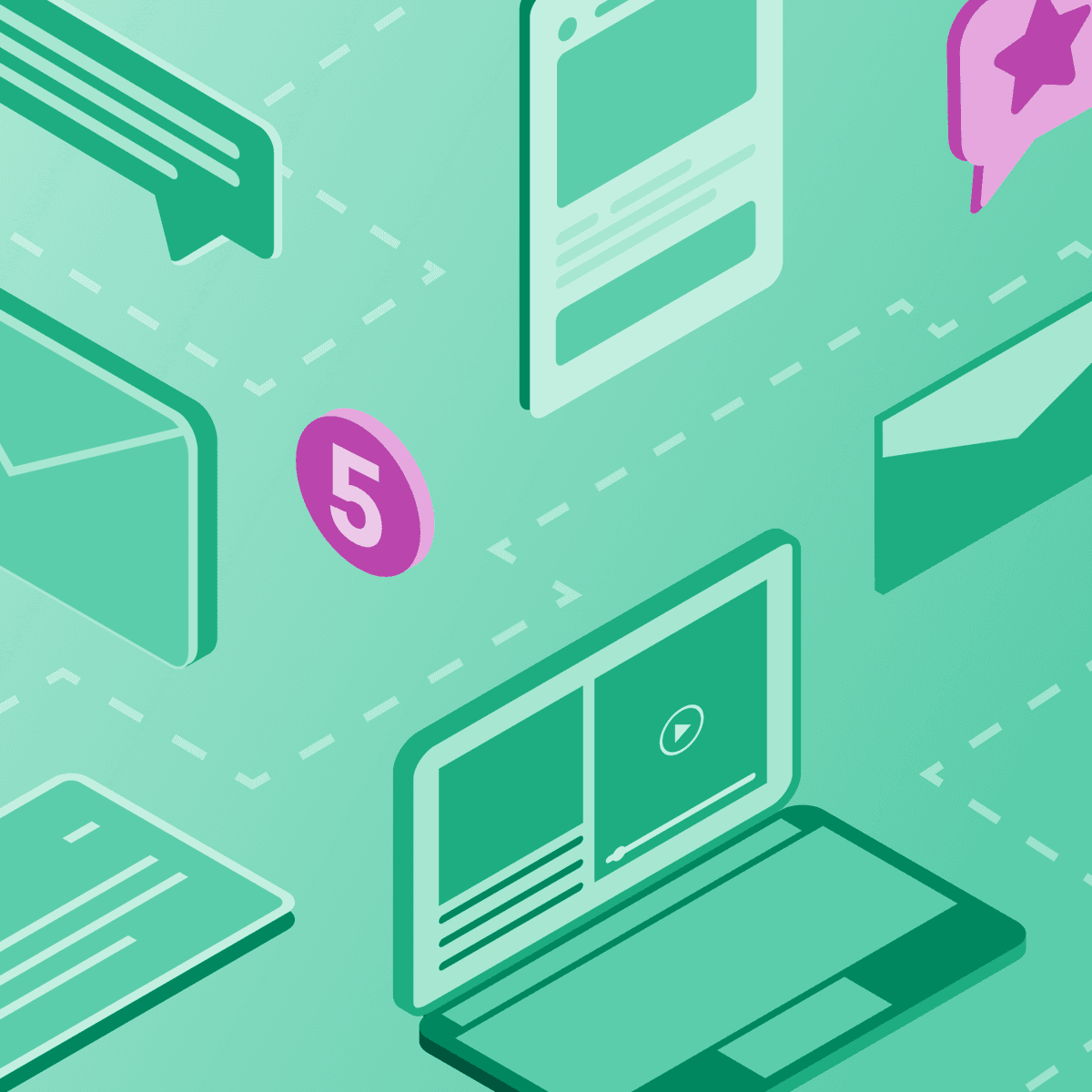

Team Braze
No, it's not just you. It's getting harder for brands across industries to stay on top—and make the most—of customer data. Between big shifts that are reshaping the third-party data landscape and the growing power and complexity of the pay-to-play advertising ecosystem dominated by major forces like Google and Meta, there are plenty of reasons why businesses might struggle to understand who their customers are and build effective relationships over time.
To help out, we'll explore two key approaches that savvy marketers are using to unlock data independence and gain control over their company's most important customer engagement and business outcomes. The first requires shifting from relying on third-party customer information to focusing on gathering and maximizing first-party data. The second part involves recognizing which users you know something about and those you don't, then getting to know, engaging, and converting these so-called “anonymous users.”
Tapping into the power of the unknown customers you're reaching, finding out more about them, and activating and monetizing them has the power to not only cut down on acquisition costs—for instance, by reducing your ad spend—but accelerate your brand’s growth. Let's dive into how you can do just that. But first, let’s explore why achieving data independence is so crucial right now.
Despite Their Best Efforts, Most Brands Do Not Have Control Over Their Customer Data
Over the past two decades, major advertising platforms have managed to gain something of a stranglehold on third-party consumer data and the digital advertising space. As a result, businesses often find themselves forced to pay huge sums to companies such as Google, Amazon, Meta (Facebook), and Apple to fuel their acquisition efforts every year. The return on these investments is questionable at best and can come with many disadvantages.
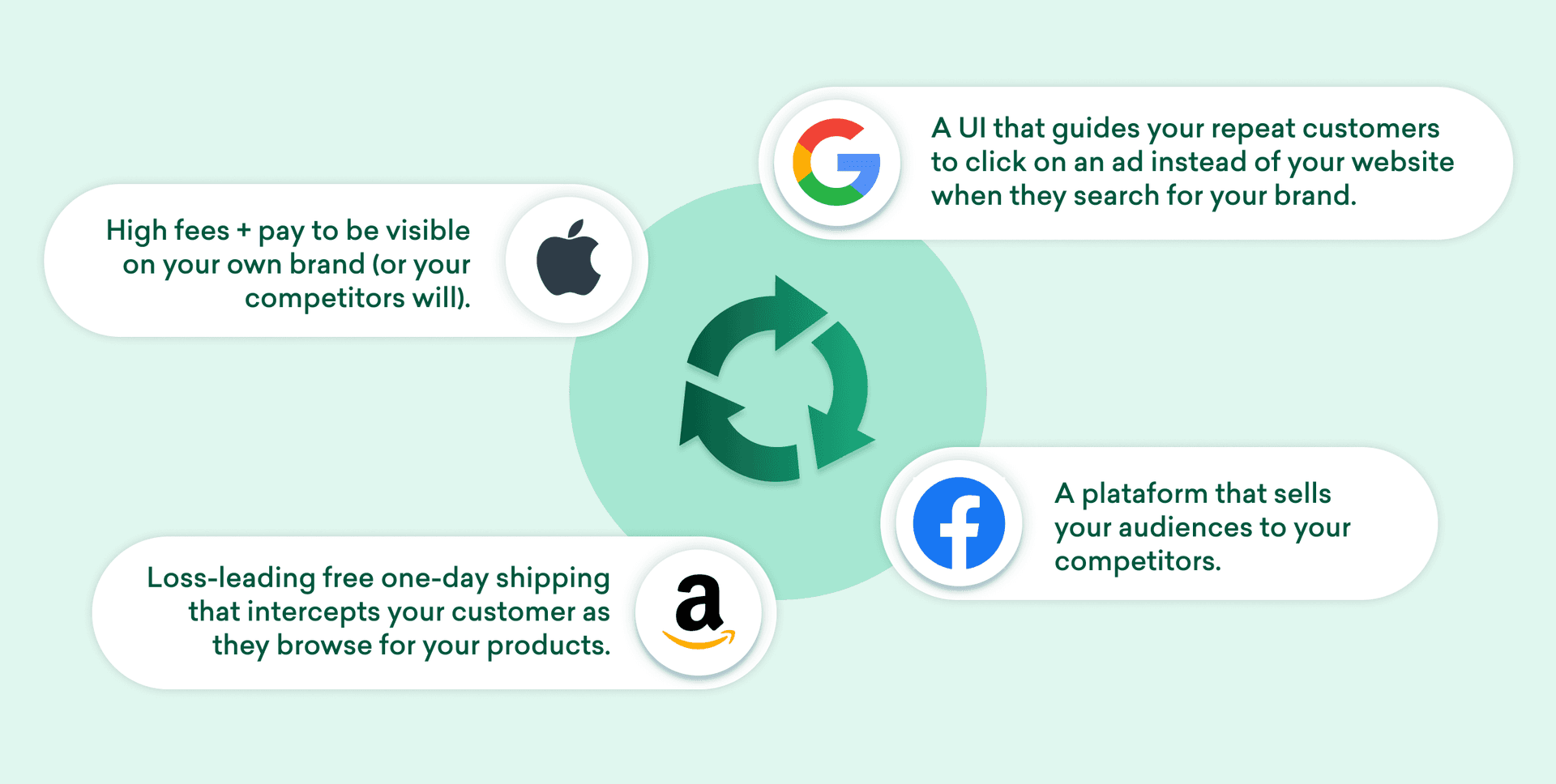
The design of Facebook's platform means that many companies are effectively selling their audiences to their competitors, while Google's dominance often means that brands have to pay to reach users who might otherwise find their website organically, at no charge to the company. Amazon and Apple have their own downsides, forcing marketers to make compromises that may result in new users, but at what cost to sustainable growth?
Beyond the far-reaching influence these major advertising platforms have over whether brands can reach their intended audiences, this landscape encourages a dependence on third-parties. The upshot? Many businesses fail to recognize their own potential power to market to the users they have successfully acquired and build sustainable relationships over time.
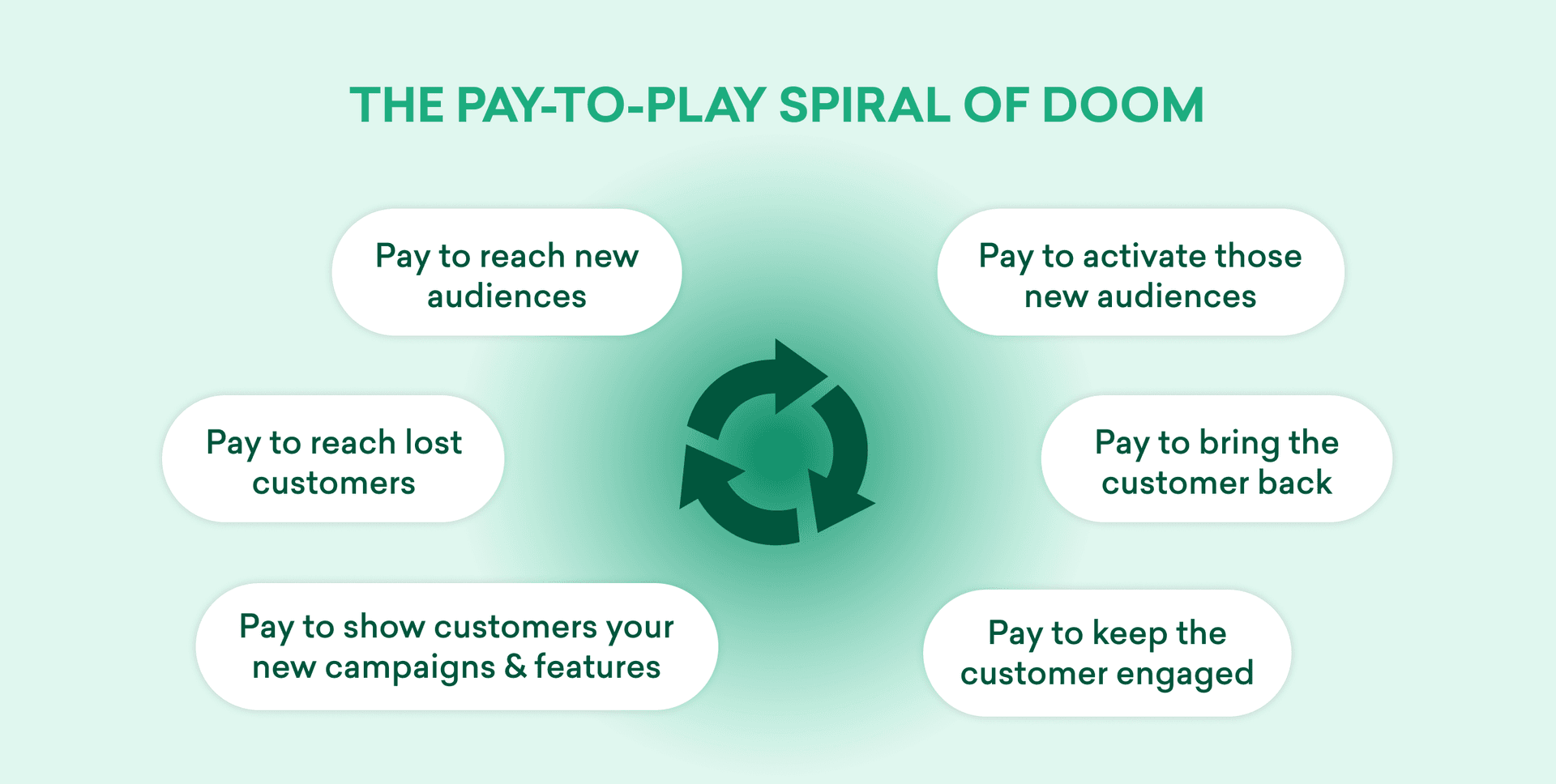
It's far easier and cheaper to engage and retain existing customers than it is to keep acquiring new ones (or to try and win back customers who have already churned). In fact, researchers have calculated the value of retention, finding that when brands are able to retain as little as 5% more of their customers, they can reap the benefits of 25% to 95% gains in profits. Still, many businesses lack a customer engagement strategy—or have inefficient ones in place to retain newly acquired customers. As a result, a large proportion of companies’ acquisition efforts go to waste and brands find themselves stuck in an endless loop of paying to play.
4 Steps to Effective Customer Data Management and Gaining Data Independence
Step 1: Recognize that first-party data is key to navigating your marketing destiny and supercharging your customer engagement efforts
As the name suggests, third-party data is inherently data that is controlled by and made available via third parties, such as platforms like Google and Apple. First-party data, on the other hand, is information you have direct oversight of because it’s gathered directly from your own customer base. First-party data can (and should) tell you about how your customers are engaging with your website, app, and messaging.
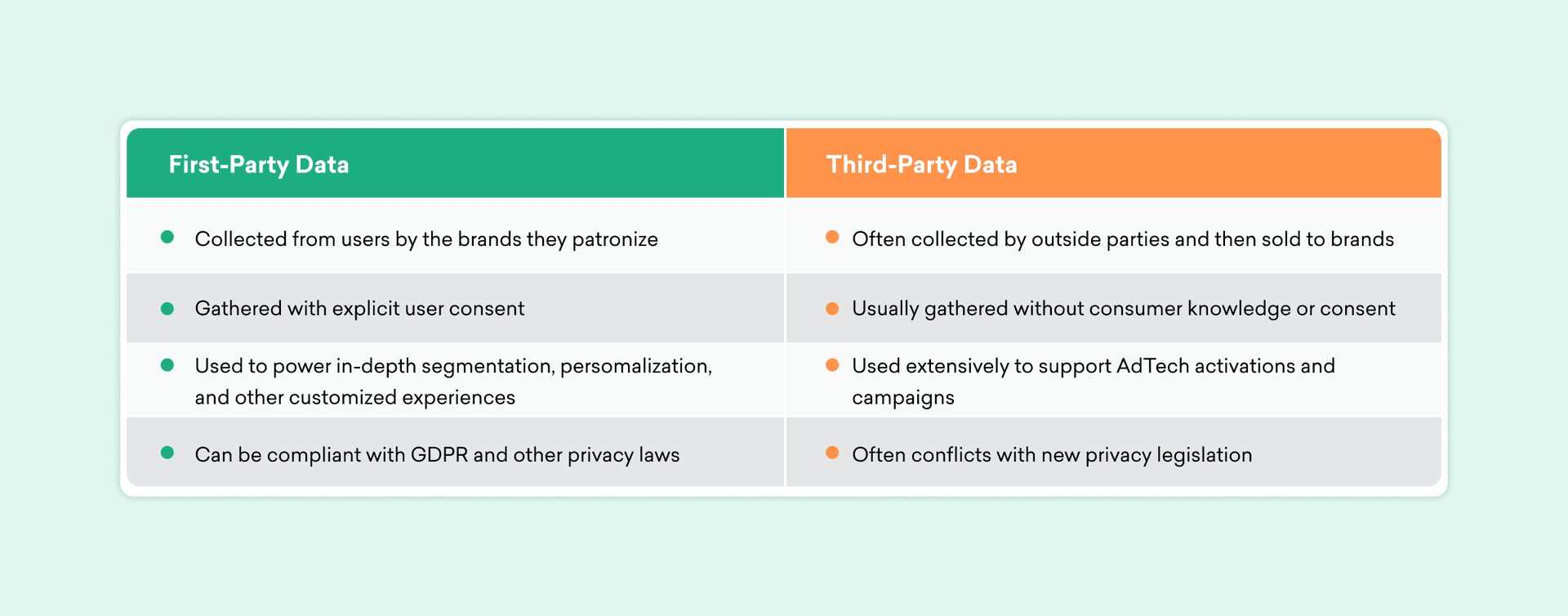
When brands collect and utilize compelling first-party data, they are better able to understand who their audiences are, what they are interested in, and what their wants and needs are in the moment, then tap these insights to deliver meaningful experiences over time.
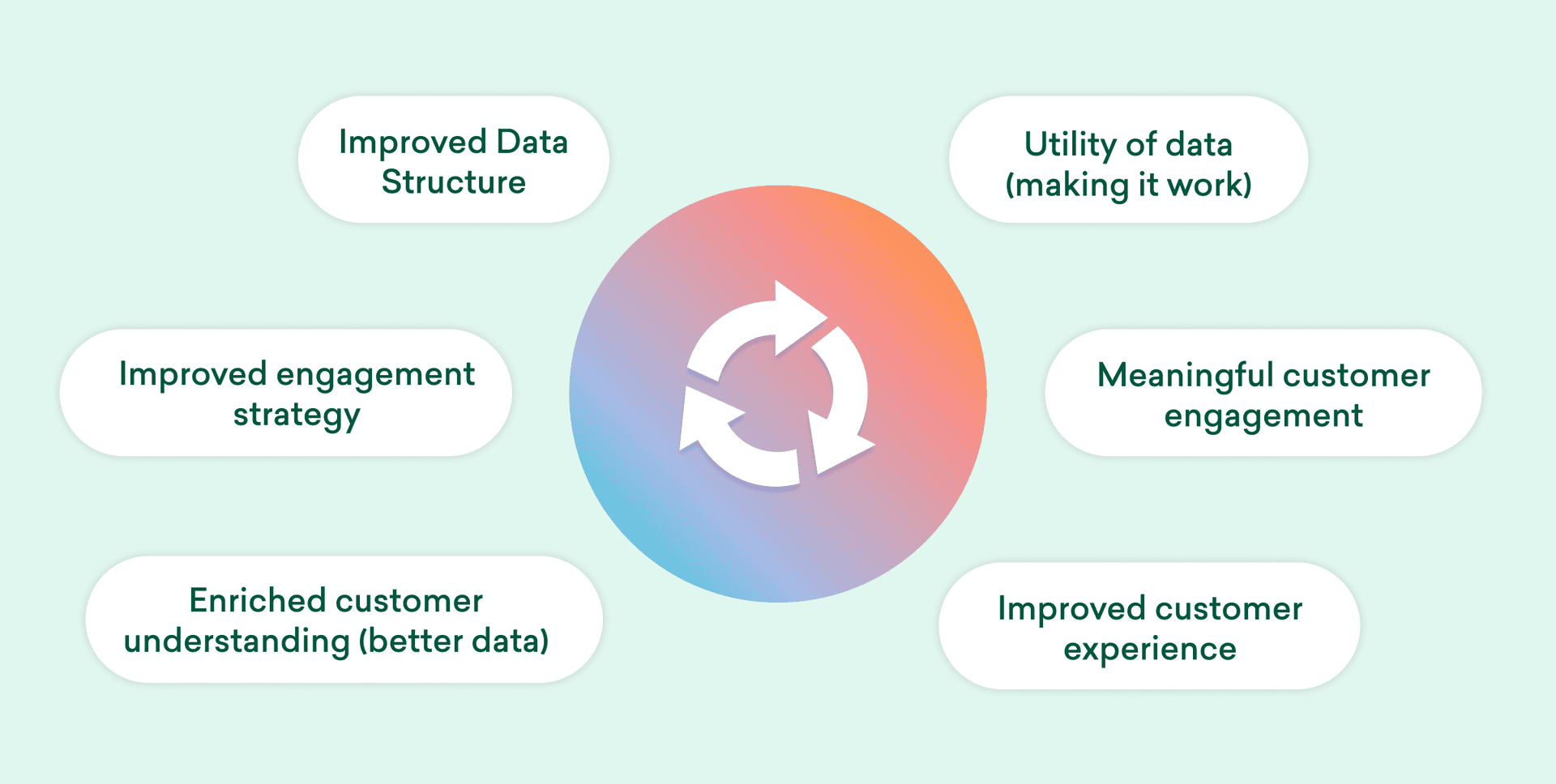
Investing in gathering and maintaining first-party data can mean the difference between acquiring mostly one-and-done customers and building long-term customer loyalty. Not only that, third-party data is quickly becoming obsolete. In 2021, Google announced plans to eliminate the third-party cookies behind third-party data collected via its platform. At the same time, Apple has introduced new consumer-centric privacy features that have the potential to complicate existing third-party data collection efforts.
As a result, nearly 40% of marketers plan to take a proactive approach to these changes by investing more heavily in zero-party data (data shared by users) and first-party data (data collected with user consent) strategies. If you’re not one of them, you may be setting yourself up for difficulties going forward.
Step 2: Prioritize your first-party data and invest in an ecosystem that can capture the true value of your products and experiences
While there's no one-size-fits-all tech steck, there is one thing every great marketing technology ecosystem has in common—a focus on fostering data independence and data agility. And achieving that objective gets easier when brands use customer data platforms (CDPs) together with customer engagement platforms like Braze. Together these technologies empower organizations to:
- Improve data integration, governance, and audience management
- Enrich their customer data by connecting and unifying first-party data from a wide variety of platforms, channels, and other sources
- Ensure the accuracy of their customer data
- Accelerate customer behavior analysis
- Get a more holistic view of each customer as an individual and create a single source of customer truth
- Drive real-time personalization that demonstrates real value
- Build more effective audiences that update in real time in response to user actions
- Make the most of their marketing investments and programs
- Streamline and enhance customer experiences to meet their users’ needs and wants
- Get better at using customer engagement channels to deliver meaningful results
Step 3: Stop focusing only on known users and unlock the value of your anonymous audience
Most marketers focus their campaigns on activating, engaging, and monetizing known users—that is, users who have created accounts or otherwise identified themselves. But while reaching these users is important, it’s not sufficient in a world where known users tend to only account for a very small portion of potential customers.
The 2022 Global Customer Engagement Review from Braze found that known users made up only 43% of brands’ new users. The other 57% are anonymous users, who take action on websites without logging in, opt to “continue as guest,” or who haven’t been given an official identifier. However, members of this group can be valuable customers if treated thoughtfully—our research found that messaging anonymous users in just one messaging channel led to a 5.3X rise in likelihood to buy.
Accordingly, as brands shift towards adopting first-party data collection to drive customer engagement, activating these anonymous users must become a much bigger part of brands' performance marketing strategies.
Step 4: Convert anonymous users into known users
The reality is that right at this very moment, anonymous users are engaging with countless brands' websites and apps. But you wouldn’t know it from the way many brands treat these users. Braze research published in the 2022 Global Customer Engagement Review shows that up to 80% of anonymous users receive no marketing messages from brands. This lack of targeted engagement is likely driving down overall conversion rates and customer engagement metrics, and could potentially cost brands millions in unrealized revenue.
Fortunately, there's a solution for this problem. Savvy brands are using account creation campaigns to target anonymous users and convert them into known customers.
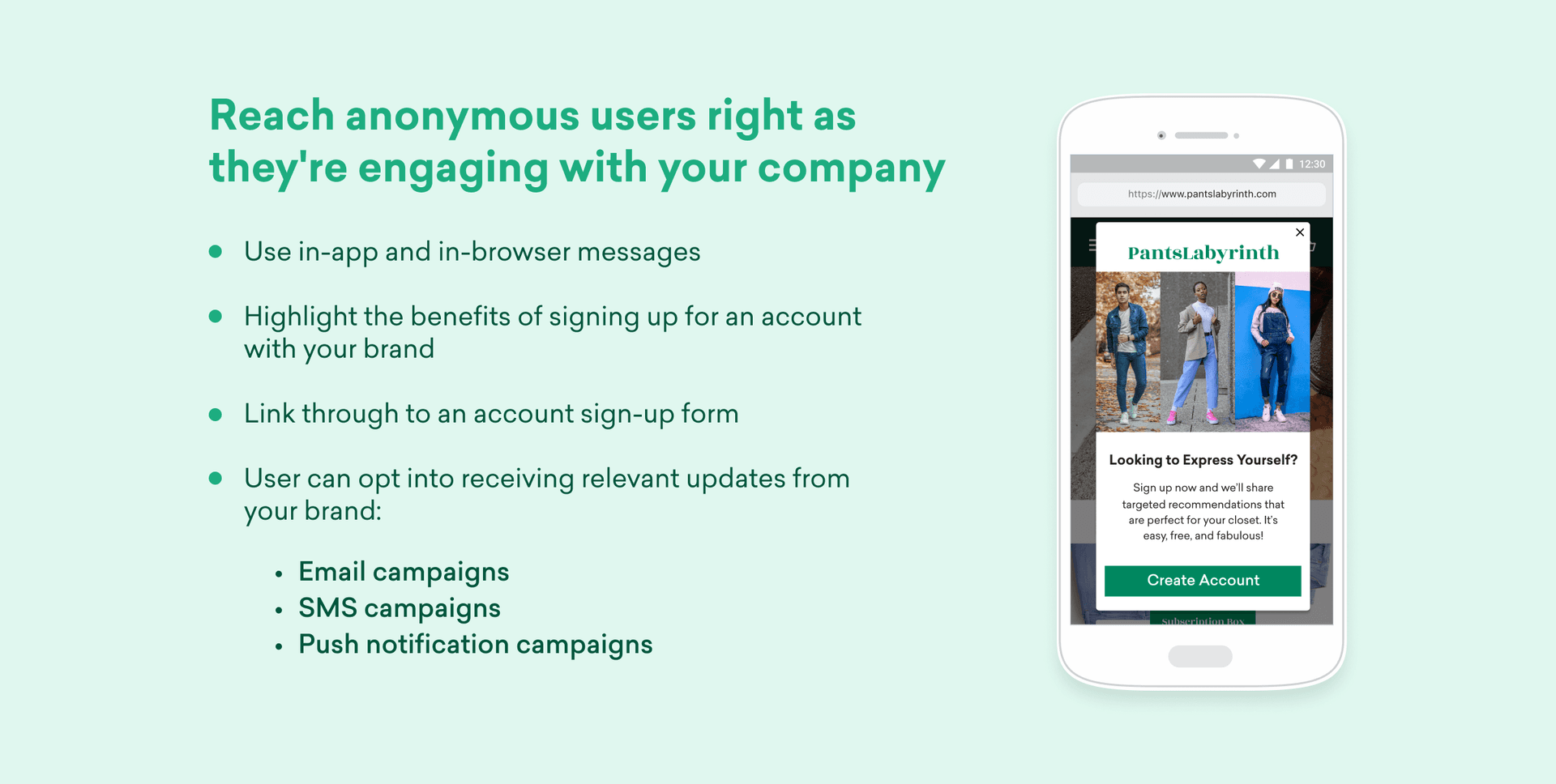
There's value in converting your anonymous users into known customers. Anonymous users spend up to 20% more if they receive messaging via in-product channels, such as in-app or in-browser messages, and via out-of-product messages, such as email marketing or SMS (after the user signs up and opts in). Not only that, but they're 21X more likely to convert from window shoppers to paying customers in the first place.
Next Steps
By embracing today’s changing data landscape and leaning into the new possibilities presented by first-party data and anonymous users, you’re opening up a world of new opportunities. Not only will you begin to free yourself from the constraints of powerful gatekeepers like Google and Apple, you will begin to understand your customers better (both your known users and anonymous ones), providing you with endless ways to advance your engagement strategies and overall business outcomes.
Find even more resources showcasing how to improve your marketing performance, check out our MWC x Braze Content Hub.
Related Tags
Be Absolutely Engaging.™
Sign up for regular updates from Braze.


